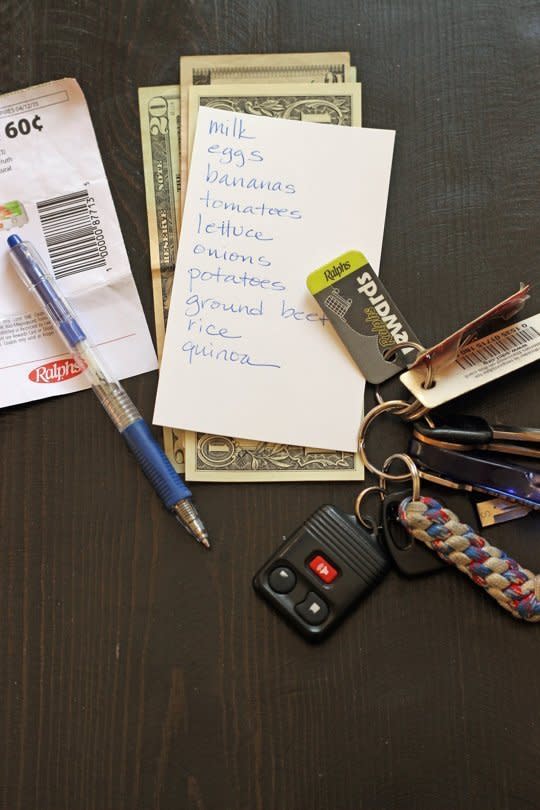6 Money-Saving Grocery Myths (and How They Really Stack Up)

I come from a long line of people who are always right. It’s true — just ask my parents. With 24 aunts and uncles and more cousins than I can count, I’ve heard lots of advice over the years, particularly about saving money.
But I’ll be the first to say that it’s sometimes difficult to sort fact from fiction. Not because my loved ones lie, but because times change, store practices evolve, and honestly, your mileage may vary. Let’s examine some of these myths that have been passed down over the generations.
1. Coupons are always worth clipping.
I love coupons. I credit them with helping our family get out of debt many years ago. We were on a tight budget, feeding five little kids with a baby on the way. Clipping coupons did save me a lot of money and help stretch our dollars a little more. I spent a lot of time making it work, but our calculations are that I made about $25/hour doing it. I also bought more junk food than I would ever buy my kids normally — because it was free.
The Verdict
Using coupons in conjunction with good sales to buy things you already know you love and use is a great way to save money. The rest of the time? You could probably go without buying those “free” sugar-coated chocolate bombs.
How a Food Budget Got us Out of Debt
2. The bigger container is cheaper.
In the 1980s, grocery stores started selling bulk packages of groceries and household items. Word got out that if you bought the bigger container, you could save a lot of money. Is that true? Yes, and no.
The Verdict
Always check the unit price: The biggest container is not always the cheapest per ounce. Sometimes the smaller package on sale is the deal. If you are using one of those handy-dandy coupons, you may find that your $1-off coupon can make a bigger dent in the unit price of a smaller package than a larger one. Lesson: Be sure to do the math.
That said, I love those ginormous cans of tomato purée and crushed tomatoes from Costco. For a few dollars and a handful of spices, I’ve can cook up a mega-batch of great sauce to use in a variety of pasta dishes.
Also, don’t buy the gallon container of soy sauce, no matter how cheap it is, if it’s not something you will use up in a reasonable amount of time.
What it’s Really Like to Shop on a Food Stamp Budget
3. Never shop when you’re hungry.
Theoretically when you’re hungry you’re more likely to buy the first thing that catches your eye and possibly forget the things on your list that you really need.
The Verdict
I’m leaning toward a yes vote on this one, unless you can convince me otherwise. Shopping when you are not hungry should help you remain rational and stick to the list.
10 Rules for Grocery Shopping When You’re Hungry
4. Always stick to your list.
Speaking of lists, should you always stick to them? I went to the store today with a short list: broccoli, potatoes, sour cream, and cottage cheese. I ended up grabbing a marked-down packet of chives for $0.59 — great to top our potatoes! — as well as a few loaves of marked-down sourdough bread for $0.99 to complement our grilled fish and baked potato dinner.
I spent a couple dollars more than I would have, but I added a little extra flavor and color to the meal, and I got away without baking biscuits in the 90-degree heatwave.
The Verdict
I say go off list when you see a good deal that will help you meet your meal planning goals. Likewise, if something on the list is too pricey, find an alternative.
6 Tips for Eating on a Very Tight Budget
5. Marked-down meat is ready to spoil and not worth it.
I’ve found some excellent deals in the meat department. Just last weekend when I was hoping to find a good price on ground beef, I found extra-lean ground sirloin marked down to $3.50/pound, which is a superb price on ground beef in my neighborhood. I checked the packages and they still had several days until their sell-by date, so I had no qualms about grilling hamburgers that night.
The Verdict
Meat department markdowns can be a boon to your budget. Just check the dates. You can always interrogate — I mean, chat with — the butcher. In my experience, they’ve always been super helpful.
6. If it’s on sale, buy as many as you can.
When you see a great sale, it’s hard to resist — like that one time I found organic canned pumpkin for 25-cents each and bought two cases of it.
I was also scrambling to use it up two years later when it approached its expiration date. It was, indeed, a great deal. However, sometimes “enough is as good as a feast.”
The Verdict
Buy as much of a sale item as you can reasonably use in the next six to eight weeks. You’ll avoid waste and not hog up precious storage space in the cupboards.
This is where I stand on these money-saving myths, but I’m open to discussion. Let me know what you think: Are these true? Or does your mileage vary?
